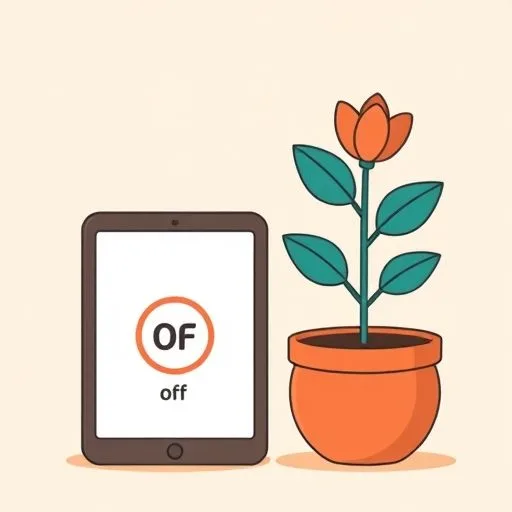
Remember that evening last week? The one where the tablet was playing cartoons in one corner while we were trying to have a real conversation in the other. I watched her eyes dart between the screen and our daughter’s face, that subtle tension in her shoulders. She was balancing it all – the digital world and the real one – without anyone even noticing. That’s when it hit me: we’re all navigating this together, trying to figure out how to make technology work for our family, not against it.
The quiet way she sets boundaries without saying a word

I’ve watched her do this thing lately – when the devices come out, she doesn’t announce screen time limits like some corporate policy. Instead, she’ll gently place her hand on our child’s shoulder and say ‘Let’s see what the real world has for us today.’ It’s not about restriction; it’s about redirection.
She’s created this healthy tech environment where screens aren’t the enemy, but they’re not the default either. There’s beauty in how she makes technology serve our family life rather than dominate it. That tablet? It’s for learning apps and video calls with grandparents. But it’s also put away during meals, during story time, during those precious moments when we’re just being together.
She’s teaching our kids that technology is a tool, not a lifestyle.
When the ping becomes background noise

We’ve all felt it – that vibration in your pocket during bedtime stories, the notification that pulls your attention away from the little face looking up at you. I’ve seen her silence her phone during dinner, not with some dramatic gesture, but with this quiet determination that says ‘This time is ours.’
Parenting in the digital age means constantly choosing between the virtual and the real, and she makes those choices look effortless. There’s a particular evening that stays with me. The phone kept buzzing with work emails, but she’d placed it face down on the counter. Our daughter was showing her a drawing, and she was fully present – no divided attention, no ‘just let me check this quickly.’
Raising tech-savvy kids who still know how to be kids

I watch how she introduces technology to our children – not as entertainment, but as exploration. She’ll sit with them and show how we can video call relatives across the ocean, or how we can look up answers to their endless ‘why’ questions. But she also makes sure they know the joy of books that don’t need charging, of games that don’t require Wi-Fi.
That balance between tech and real life? She embodies it. She’s teaching them to be digital natives who can code but also climb trees, who understand algorithms but also appreciate the unpredictable beauty of a conversation that doesn’t follow a script. It’s about giving them the tools to navigate both worlds confidently.
The unspoken rules that keep our family connected

We never really sat down and wrote a family technology policy. Instead, these guidelines emerged naturally from watching her lead by example. Device-free meals became a thing because she started leaving her phone in another room during dinner. Outdoor time became sacred because she’d suggest walks where we leave all screens behind.
I’ve noticed how she creates tech-positive spaces too. The charging station in the living room where devices go to rest at night. The way she models putting her phone away when someone’s talking to her. These small actions speak louder than any lecture about screen time limits ever could.
When technology actually brings us closer

There’s this beautiful paradox I’ve observed: sometimes technology becomes the very thing that deepens our family bonds. Like when she found that app that turns math practice into a game we can play together. Or how she sets up video calls with grandparents so our kids can maintain those relationships across miles.
I watched her last weekend, teaching our daughter how to video call her cousin. There was such care in how she explained it – ‘This isn’t just a screen; it’s a window to someone we love.’ That’s the balance we’re finding: using technology as a bridge rather than a barrier.
At the end of the day, it’s not about perfect rules or rigid screen time limits. It’s about that quiet awareness she brings to how technology fits into our family life. It’s about being intentional, being present, and remembering that the most important connections happen eye to eye, not screen to screen.
Source: The Fig Strangler: Tips for Successful Legacy Modernisation in Capital Markets (Steve Grob), Finextra, 2025-09-23
